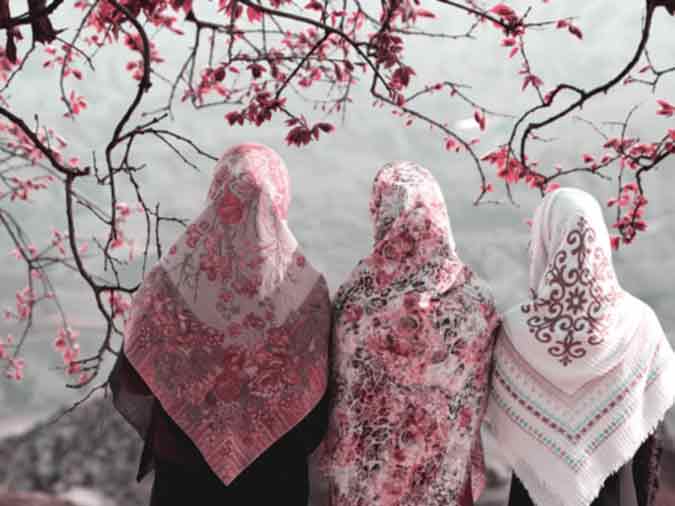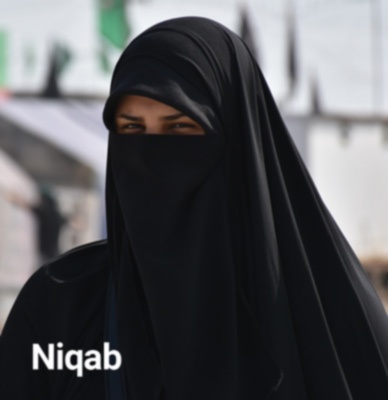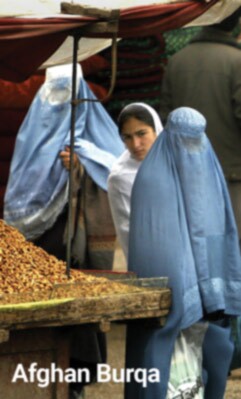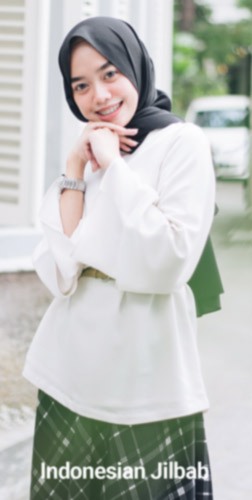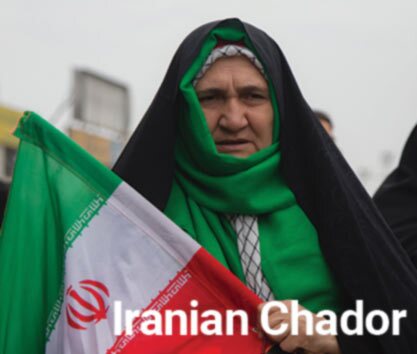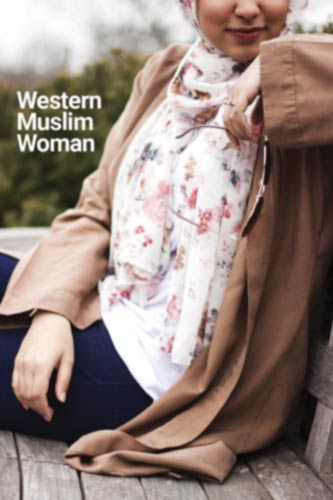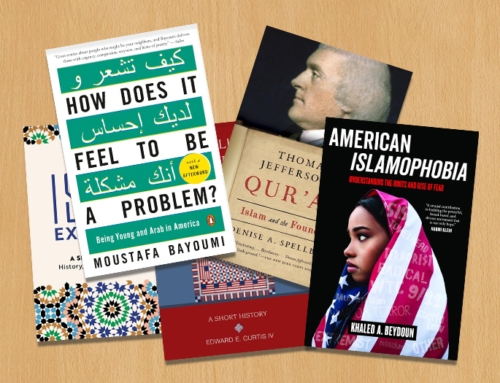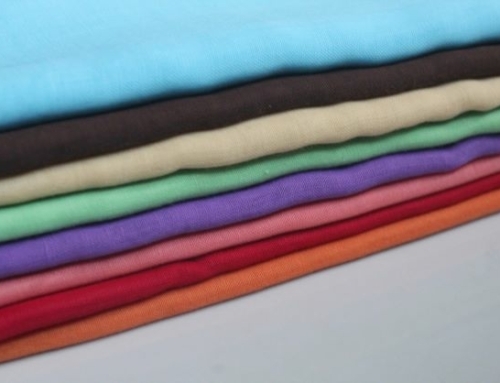By: Dr. Katherine Bullock
What is Hijab?
Hijab is an Arabic word from the root hajaba, meaning to cover, conceal, or hide. It is a complex notion encompassing action and apparel. It includes lowering the gaze with the opposite sex, and applies to men as well, who must lower their gaze and cover from navel to knee. Let’s call it “modest dress and behavior.” The word itself appears in the Qur’an in several contexts, though, interestingly, not in the two verses that address Muslim women’s dress directly [24:31] and [33:59]. These two verses enjoin the believing women to draw their “khimar” over their bosoms and to “draw their outer garments” around them when they are outside, respectively. Traditionally, a “khimar” is defined as a headcover, referred to by those who believe that hijab includes covering the head. Hence the interpretation: “draw your headcover over your neck and bosom.” From this point of view, hijab as modest dress includes covering the head with a scarf.
Modest behavior includes not touching the opposite gender, nor being alone in a room together.
The word hijab is also used as the word to describe the headcover itself, as in “I am wearing a pink hijab to match my skirt today.”
Are Muslim Women the Only Women Who Wear Headscarves?
Many different faith and ethnic groups have head coverings for both men and women. Sikh and Hindu women wear loose veils over their heads. Amish women wear headscarves. Catholic nuns still wear head coverings, and Mary the Mother of Jesus, peace be upon him, is always depicted in a head covering. Orthodox Jewish women are also required to cover their hair. Many avoid the modern conundrum of appearing strange by using a wig instead of cloth to accomplish this.
When do Muslim Women Start Wearing a Headscarf?
Once a young woman reaches puberty, the headscarf becomes an obligation. Some young girls like to wear it to practice, or dress up and pretend to be grown up, but it’s not required of them.
Where Does a Muslim Woman Wear Hijab?
She will wear it in front of unrelated men, and men in the extended family whom she would be eligible to marry. This includes inside her home and outside it. If none of those men are present, she doesn’t have to wear it, even if she is outside.
What Does the Word “Veil” Refer to?
When used to describe Muslim women’s modest dress, the word “veil” is totally inadequate. Region, history, class position and politics all contribute to an incredible variety of modest dress.
A face veil, the proper correspondence with the English word “veil”, is known as a “niqab.”
The Afghan burqa is a full body covering with mesh grille for seeing;
The Iranian chador is a large single piece of cloth cut as a semi-circle covering the head and body leaving the face uncovered;
the Iranian manteau is a long cloak worn with a headscarf;
The Indonesian jilbab, often in traditional batik, is a long loose tunic worn over pants or long flowing skirts, with a headscarf;
In the West, Muslim women usually adapt mainstream fashion, pairing a long-sleeved shirt with a long skirt and a color coordinated headscarf often held elaborately with jewelery-enhanced pins. YouTube videos and Muslim women’s fashion magazines contain tutorials and suggestions on how to wear different styles of hijab.
Do Muslim Men Wear Hijab?
Muslim men are required to dress modestly. It is not called hijab. The Qur’an addresses men as well, telling them to lower their gaze and guard their private parts [24:30]. Their clothing must be loose, not transparent, and cover from the navel to the knee, even in front of other men. Open shower rooms make this difficult to fulfill.
What Does the West Think of Hijab?
Since at least the eighteenth century, Europeans have interpreted Muslim women’s dress to be an oppressive custom amongst Muslims, although in the Middle Ages, Western romance novels depicted Muslim women as strong and overbearing. They were powerful individuals who acted on their own accord. The contemporary notion of Muslim women as oppressed began with the Western expansion and colonization of the Middle East in the seventeenth century. Westerners believed they were from a superior civilization that needed to save Muslim women from the backward oppressiveness of their religion and civilization. The word “veil” became the visual image to encapsulate this, even though at the time, Christian women still wore veils and various forms of head covers themselves. Although we live in the twenty-first century, this old idea that Muslim women need saving persists. Today, Muslim women are choosing to interpret and follow their faith in their own way. Many reject the notion that they need saving and opt to wear a hijab to demonstrate publicly their membership in the Muslim community.
What are Some Things Public School Educators Should Know about Female Muslim Students Who Wear Hijab?
Most importantly is not to assume she is being forced by her parents. Many young Muslim women proudly adopt hijab to demonstrate their identity to the world at large. Often their families are opposed to this;
Hijab is a piece of cloth, not an intellectual cover, she should be able to strive and achieve academically;
The hijab is not a barrier to full participation at school, with certain accommodations.
What Kind of Accommodations Would a Muslim Student in Hijab Need at School in Order to be Fully Engaged?
If there is a school or sports uniform, an adaptation to long pants/skirt and long sleeves;
A gym uniform that is long sleeved and loose, with a headscarf, it can be in the school colors if that is required;
Female only swimming classes with windows covered and female lifeguards;
Private shower stalls and cubicles for changing.
Female partners for sport related activities that would include physical contact, like karate.
Katherine Bullock, PhD, teaches Islam and politics in the Department of Political Science, University of Toronto Mississauga. She is the author of “Rethinking Muslim Women and the Veil: Challenging Historical and Modern Stereotypes.”
Got Questions?
We have Answers. Get in touch now.


